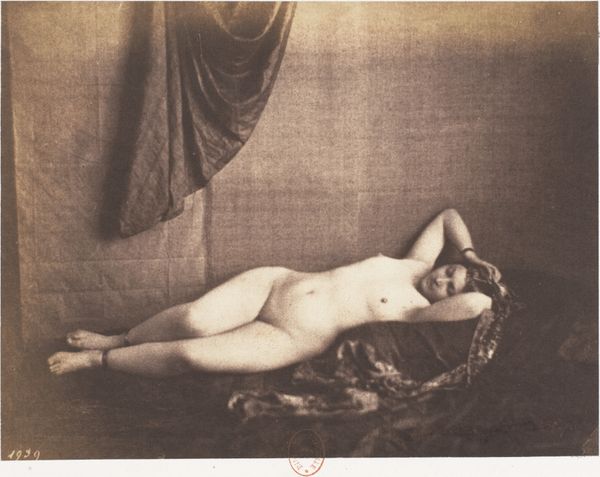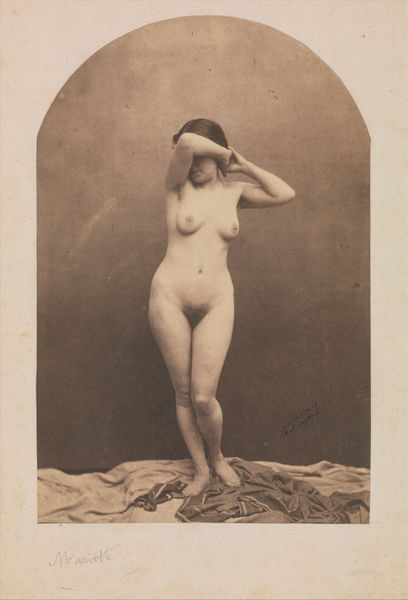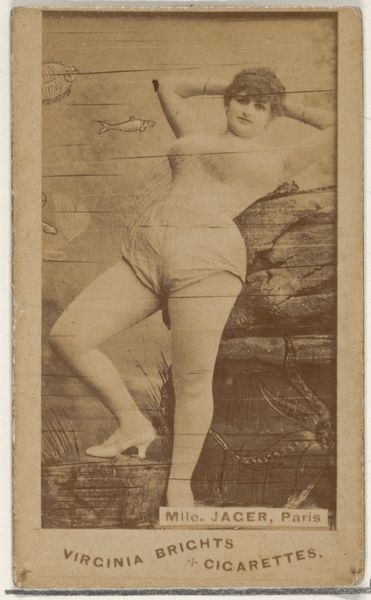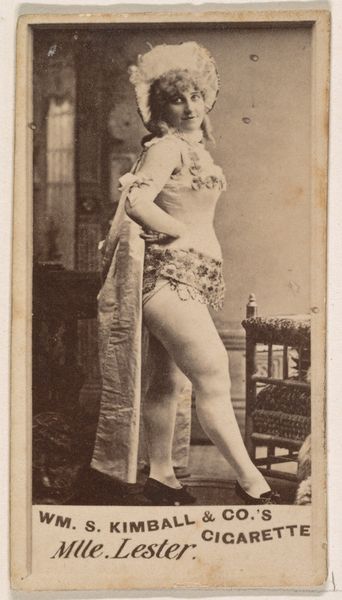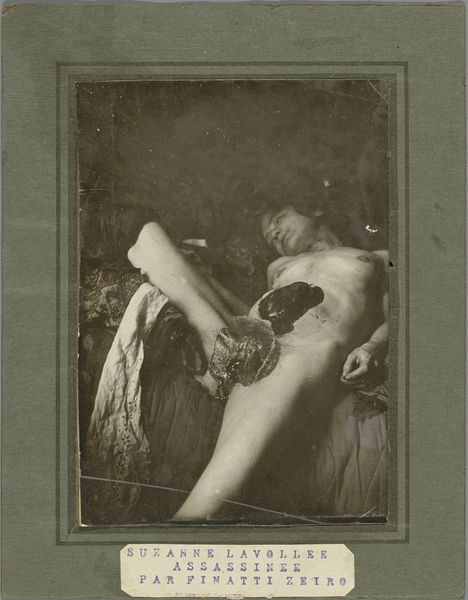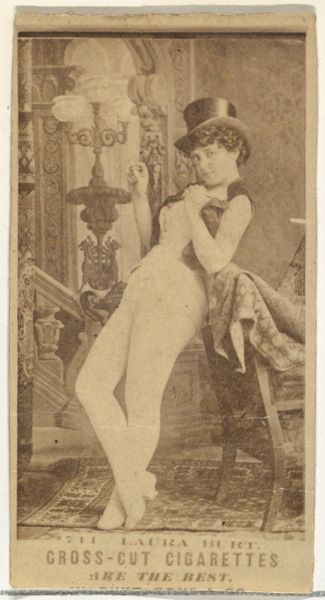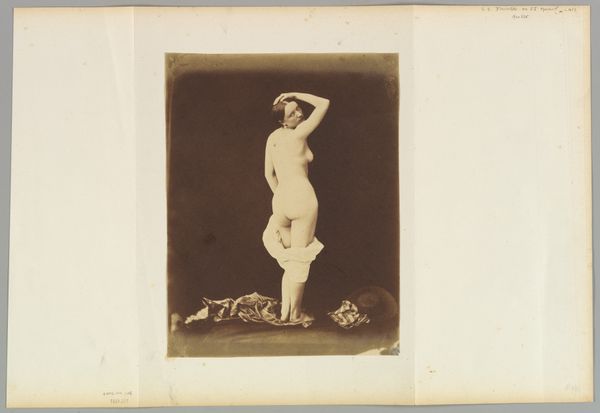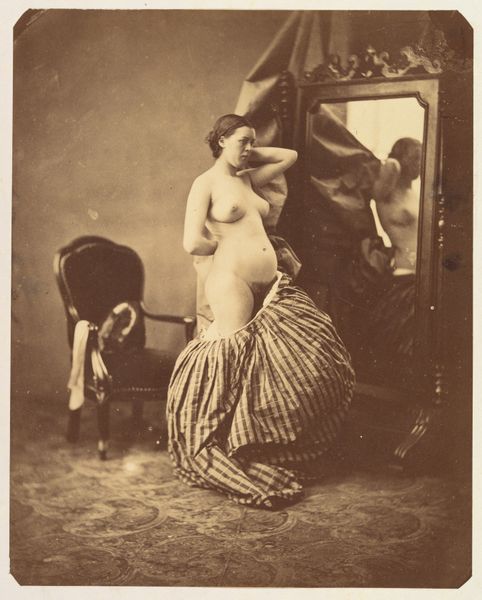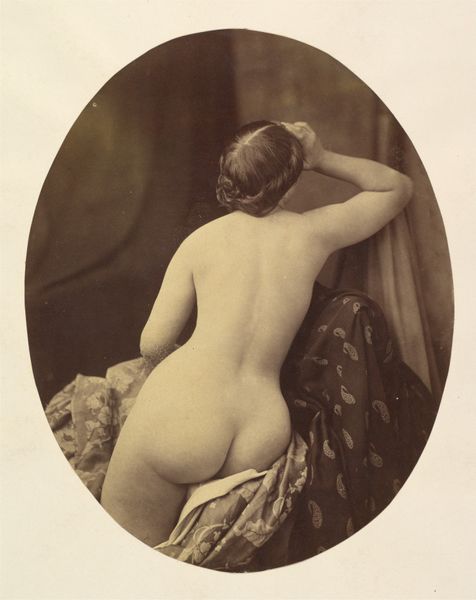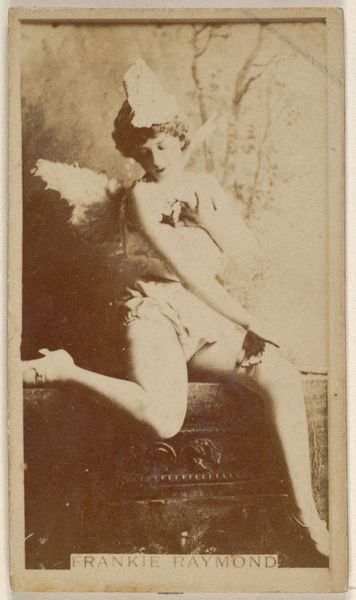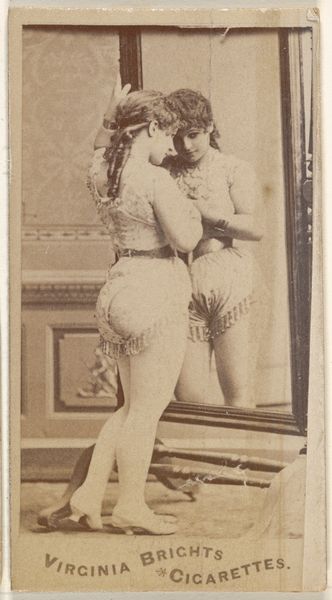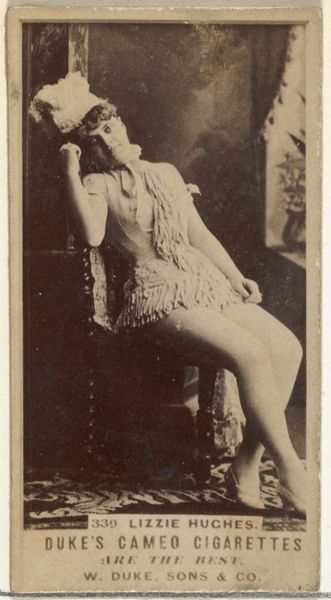
Studie van een vrouwelijk naakt, staand op de rug gezien, bij tafel met appel 1881
0:00
0:00
#
photo of handprinted image
#
aged paper
#
toned paper
#
light pencil work
#
water colours
#
ink paper printed
#
parchment
#
tea stained
#
watercolour illustration
#
watercolor
Dimensions: height 137 mm, width 95 mm
Copyright: Rijks Museum: Open Domain
Curator: This intriguing piece is titled "Studie van een vrouwelijk naakt, staand op de rug gezien, bij tafel met appel"—"Study of a Female Nude, Standing, Seen from the Back, by a Table with Apple"—and it's by Louis Bonnard, dating back to 1881. Editor: The tones create an immediate sense of antique, almost faded beauty. It's striking how soft and diffuse everything seems, especially given the inherent vulnerability of the subject. Curator: Yes, the way Bonnard works with watercolor is critical here. There’s an intimacy established by the light pencil work underneath the watercolor washes and the conscious deployment of aged and toned paper. It accentuates form through subtle contrasts rather than harsh outlines. Editor: Which suggests, for me, a specific mode of making – perhaps constrained by access to resources, certainly mediated by the printing processes. The photograph-like quality indicates a mass production, perhaps pointing to particular historical approaches to artmaking being more readily available. The choice of watercolor over oil or other more traditionally valued material also interests me. What sort of market was this made for, do you imagine? Curator: We might consider its formal connection to academic studies. The careful arrangement of the figure, the table, the single apple – each element seems deliberately placed to direct the viewer's eye and communicate narrative potential through symbolism, specifically feminine desire. Editor: And let’s think, too, about the labor embedded within it—the physical act of applying watercolour and using the materials for reproduction and potential market speculation. These are all considerations shaping how the image operates socially and how artistic labor is consumed. The apple, an early form of nourishment being provided to other artists or customers maybe? Curator: These material processes ultimately enhance and dictate the artwork’s texture. I feel a sense of quiet dignity conveyed here, wouldn't you agree? The subject's pose projects this self-possessed vulnerability, her gaze downcast, yet entirely comfortable. Editor: Absolutely. Focusing on both the subject as laboring and posed provides many access points. The texture offers us more than formal arrangement. Thank you for highlighting its features. Curator: Likewise, thinking materially provides new insight. Let's continue!
Comments
No comments
Be the first to comment and join the conversation on the ultimate creative platform.
